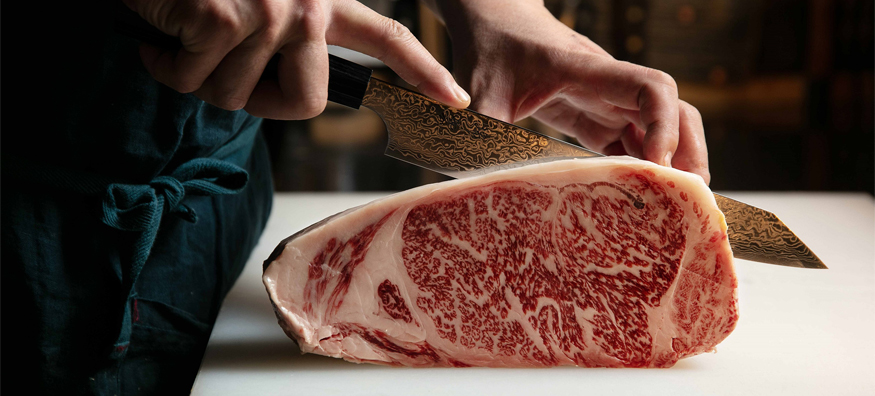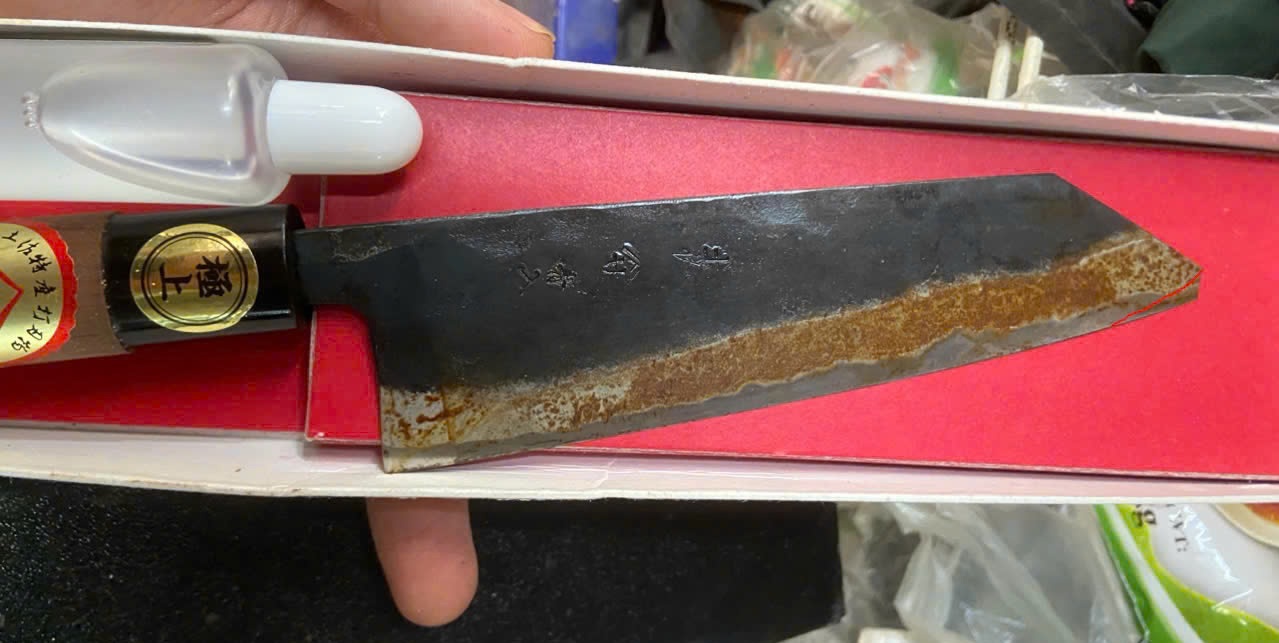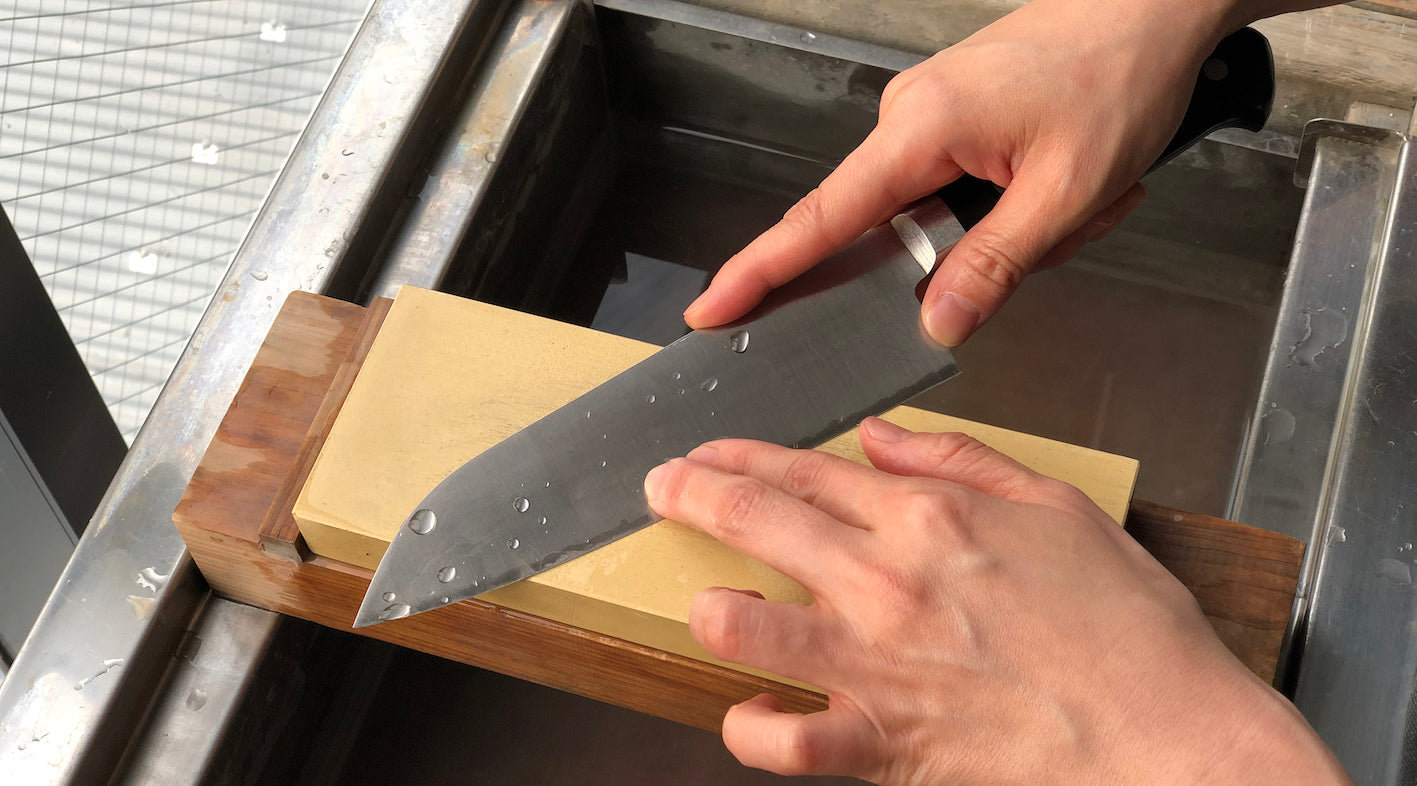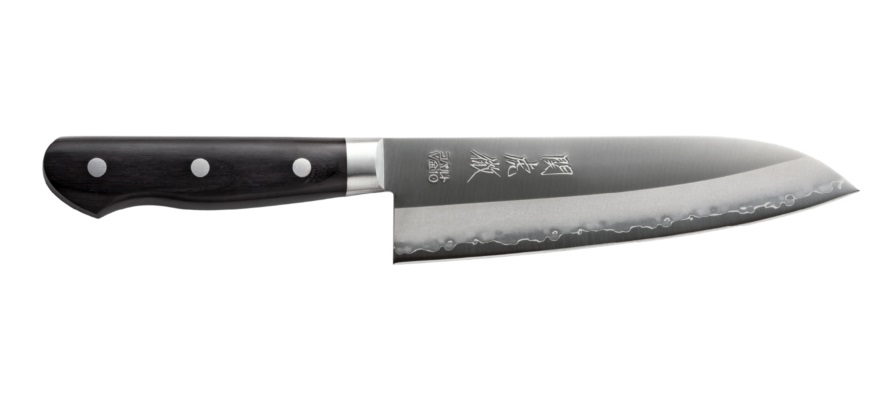Choosing between VG10 steel and Aogami Blue steel is a question that often puzzles many people — especially when buying a Japanese kitchen knife for the first time.
HAMONO has previously published a detailed comparison of these two steel types, which you can read here.

In this article, HAMONO will share real-life impressions and hands-on experience from a user’s perspective — helping you make a more confident and informed decision when choosing a kitchen knife.
The Challenge of Choosing a Japanese Kitchen Knife
Spending a significant amount of money on your first Japanese kitchen knife is never an easy decision.
Beyond choosing the right brand and blade shape, selecting the right type of steel can also be quite overwhelming.

Through online searches or community forums, you’ll easily come across information about VG10 steel - one of the most commonly used Japanese knife steels today.
If you dig a little deeper, you’ll likely encounter mentions of Aogami Blue Steel - a material highly praised through word of mouth by knife enthusiasts.
The Difference Between VG10 and Aogami
When buying a Japanese kitchen knife for the first time, it's difficult to tell the difference between VG10 and Aogami Blue Steel just by looking at them - unless the steel type is clearly marked on the blade.
Both types are impressively sharp, but if you try cutting through a sheet of paper, you'll immediately feel the difference - especially the uniquely smooth, almost effortless sensation that Aogami delivers.

When it comes to initial sharpness, Aogami Blue Steel clearly stands out — a conclusion supported not only by hands-on experience but also by its chemical composition.
Rust Resistance: Aogami vs. VG10
One of the main drawbacks of Aogami Blue Steel is its lower rust resistance compared to VG10. When cutting acidic ingredients like lemons, the Aogami blade can begin to oxidize in a short period if not cleaned immediately.
In contrast, VG10 knives remain virtually unchanged even after extended use without prompt cleaning.

To improve rust resistance, Aogami Blue Steel is often crafted using a Sanmai construction — with a hard Aogami core sandwiched between two layers of softer stainless steel. This helps protect most of the blade from rusting.
However, if you choose a kurouchi finish (black-forged coating), extra care is needed. Once this protective layer begins to rust, it cannot be restored.
Sharpening Ease When the Knife Becomes Dull
Many people assume that a knife’s hardness determines how easy it is to sharpen — but in reality, it’s more complex than that.
Sharpening depends on several factors, including the type of sharpening stone, the user’s experience, sharpening angle, and of course, the steel’s characteristics.

Although Aogami is harder than VG10, both steels are quite similar in terms of sharpening ease.
VG10 contains vanadium, which forms small, hard carbide particles that can make sharpening more difficult.
On the other hand, Aogami — which contains little to no vanadium — is rich in tungsten and carbon. These elements create hard carbides as well, but they tend to fracture more easily, making it easier to achieve a razor-sharp edge.
Should You Choose VG10 or Aogami Steel?
If you've been exploring Japanese knives, HAMONO believes it's only a matter of time before you end up owning both types of steel.
That said, for beginners, we recommend starting with VG10 — and here’s why:

-
Excellent rust resistance, easy to maintain without requiring real-world experience
-
Sharp and versatile, suitable for a wide range of kitchen tasks
-
Easy to get used to in terms of handling, care, and sharpening
-
Can be shared with others without needing specialized knowledge of knife maintenance
After gaining some experience, you may want to upgrade to Aogami Blue Steel — a harder steel that holds its edge longer and offers a different cutting feel.
However, keep in mind that Aogami is more prone to rust if not properly maintained, so you’ll need to care for your knife more regularly.
If you’re a beginner but still want to try Aogami right away, consider starting with Sanmai construction or similar designs, where a softer outer layer protects the blade — helping to reduce the risk of full-surface rust.

Whether you choose VG10 or Aogami, each steel has its own unique advantages.
If you've fallen in love with Japanese kitchen knives and are diving deeper into their world, HAMONO believes owning both types is simply a matter of time.
So don’t overthink it - both are excellent choices that will serve you well and enrich your cooking experience.
HAMONO
News in the same category